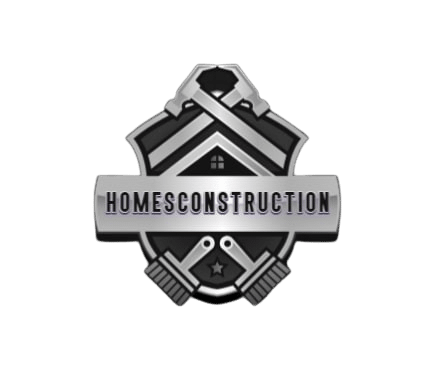In recent years, the construction industry has undergone a significant transformation, with an increasing focus on sustainability and eco-friendly practices. Green house constructions, also known as sustainable or environmentally friendly homes, have emerged as a key trend, driven by the growing awareness of climate change, resource depletion, and the need for healthier living environments. This article delves into the principles, benefits, challenges, and future prospects of green house constructions, highlighting their importance in creating a sustainable future.
Principles of Green House Constructions
Green house constructions are guided by several core principles aimed at reducing environmental impact and promoting sustainability. These principles include:
- Energy Efficiency: One of the primary goals of green house constructions is to minimize energy consumption. This is achieved through various means, such as installing high-performance insulation, energy-efficient windows and doors, and using renewable energy sources like solar panels and wind turbines.
- Water Conservation: Sustainable homes incorporate water-saving technologies and practices. These include low-flow fixtures, rainwater harvesting systems, and greywater recycling, which reduce water usage and promote efficient water management.
- Sustainable Materials: Green buildings prioritize the use of sustainable, non-toxic, and locally sourced materials. This reduces the carbon footprint associated with transportation and manufacturing, and ensures healthier indoor air quality.
- Waste Reduction: Construction waste is a significant environmental issue. Green house constructions aim to minimize waste through careful planning, recycling, and the use of prefabricated components that reduce on-site waste.
- Indoor Environmental Quality: Creating a healthy indoor environment is a crucial aspect of green building. This involves using non-toxic materials, ensuring proper ventilation, and maximizing natural light to improve occupant well-being.
- Site Sustainability: The location and orientation of a building can significantly impact its environmental footprint. Green house constructions consider site selection carefully to minimize disruption to the natural environment and maximize energy efficiency through passive solar design.
Benefits of Green House Constructions
The benefits of green house constructions are manifold, encompassing environmental, economic, and social dimensions:
- Environmental Benefits: Green homes reduce greenhouse gas emissions, lower energy and water consumption, and minimize waste. By using sustainable materials and renewable energy sources, they help mitigate climate change and conserve natural resources.
- Economic Benefits: Although the initial cost of green building may be higher, the long-term savings are substantial. Energy-efficient homes have lower utility bills, and sustainable materials often have longer lifespans, reducing maintenance and replacement costs. Additionally, green homes often have higher resale values and may qualify for tax incentives and rebates.
- Health Benefits: Green homes promote healthier living environments by using non-toxic materials, ensuring good indoor air quality, and providing abundant natural light. This can lead to improved physical and mental well-being for occupants.
- Community Benefits: Sustainable developments can enhance community resilience by promoting local economies, reducing environmental impacts, and creating green spaces. This contributes to a higher quality of life for residents and fosters a sense of community.
Challenges in Green House Constructions
Despite their numerous benefits, green house constructions face several challenges:
- Higher Initial Costs: The upfront cost of green building materials and technologies can be higher than conventional options. This can be a barrier for some homeowners and developers, despite the long-term savings and benefits.
- Lack of Awareness and Education: Many consumers and builders are still unaware of the benefits and practices of green building. Increasing awareness and education is crucial to drive the adoption of sustainable construction practices.
- Regulatory and Policy Barriers: In some regions, building codes and regulations may not fully support or incentivize green building practices. Policy reforms and incentives are needed to encourage sustainable construction.
- Skilled Labor Shortage: Green building requires specialized knowledge and skills. The construction industry faces a shortage of skilled labor trained in sustainable practices, which can hinder the growth of green house constructions.
Future Prospects of Green House Constructions
The future of green house constructions looks promising, with several trends and innovations poised to drive growth and adoption:
- Technological Advancements: Advances in technology are making green building more accessible and affordable. Innovations such as smart home systems, energy storage solutions, and advanced building materials will enhance the efficiency and sustainability of green homes.
- Increased Awareness and Demand: As awareness of environmental issues and the benefits of green building grows, demand for sustainable homes is expected to rise. This will drive market growth and encourage more builders to adopt green practices.
- Government Incentives and Policies: Governments around the world are recognizing the importance of sustainable construction and are introducing policies and incentives to promote green building. These initiatives will support the growth of green house constructions and help overcome some of the existing barriers.
- Community and Industry Collaboration: Collaboration between communities, industry stakeholders, and policymakers will be crucial in driving the adoption of green building practices. Sharing knowledge, resources, and best practices can accelerate the transition to sustainable construction.
- Holistic Approaches: Future green house constructions will increasingly adopt holistic approaches that consider the entire lifecycle of a building, from design and construction to operation and demolition. This will ensure that sustainability is integrated into every aspect of the building process.
Conclusion
Green house constructions represent a critical step towards a sustainable future. By prioritizing energy efficiency, water conservation, sustainable materials, waste reduction, and healthy indoor environments, green homes offer significant environmental, economic, and social benefits. While challenges remain, technological advancements, increased awareness, supportive policies, and industry collaboration are driving the growth of sustainable construction. As we move towards a greener future, green house constructions will play a vital role in creating resilient, healthy, and thriving communities for generations to come.

